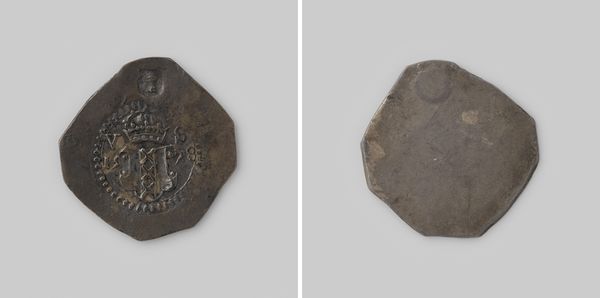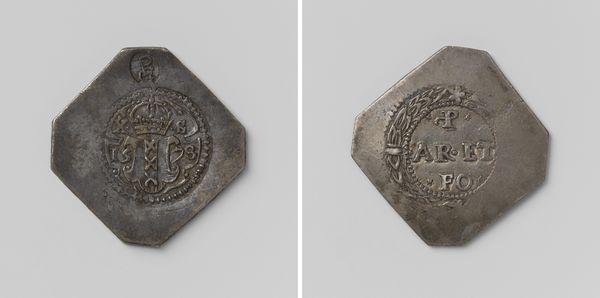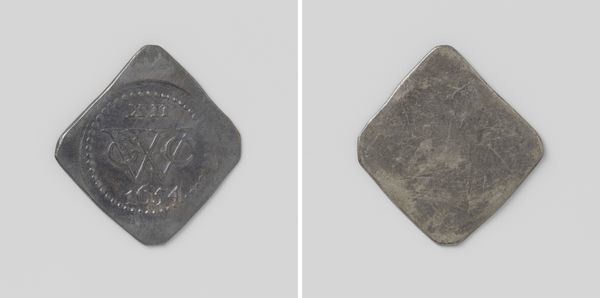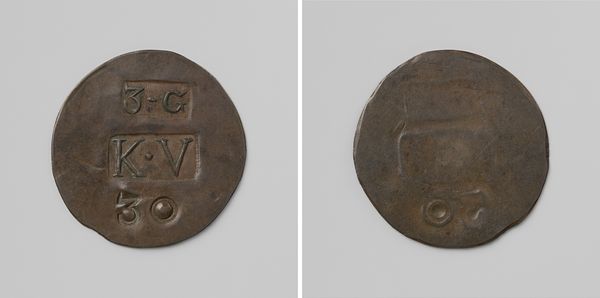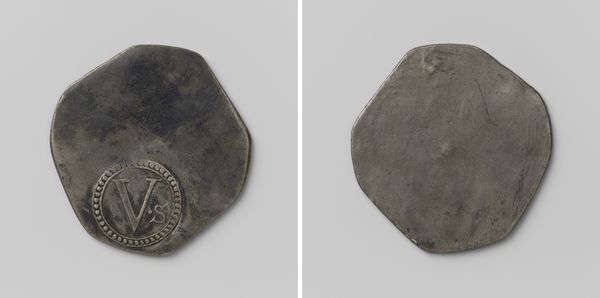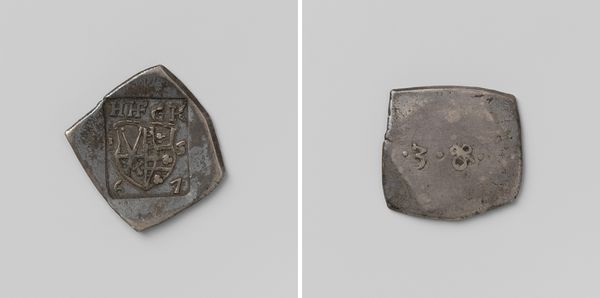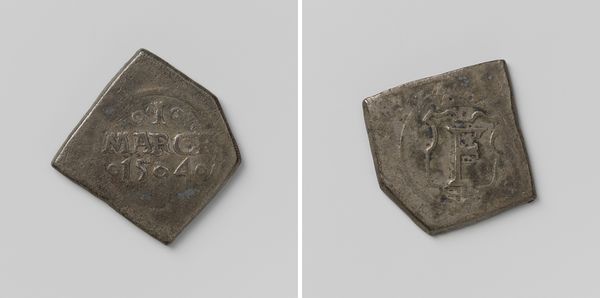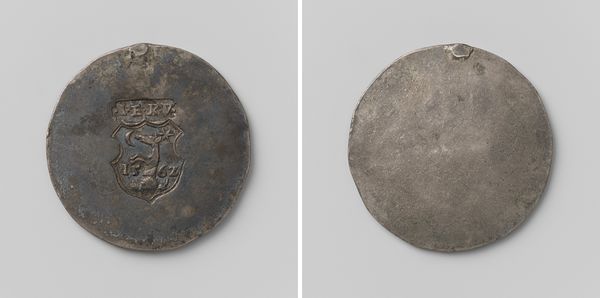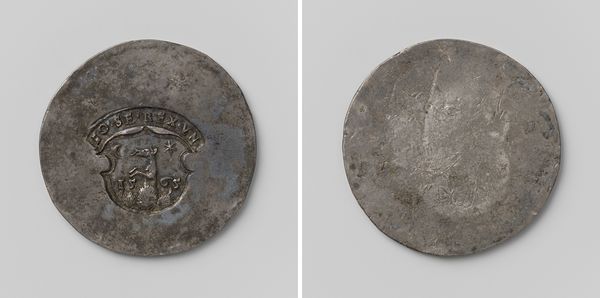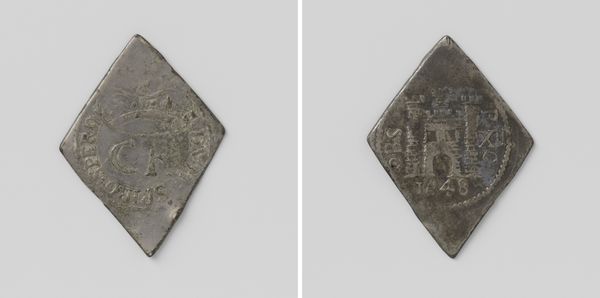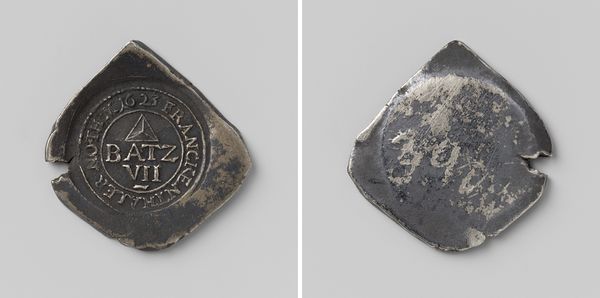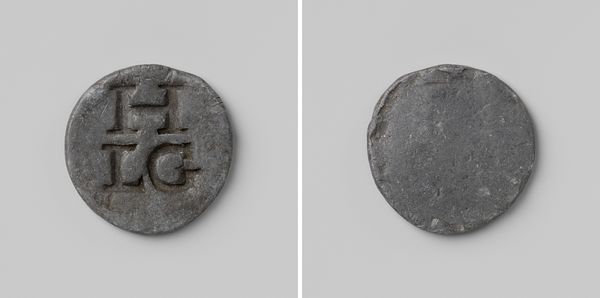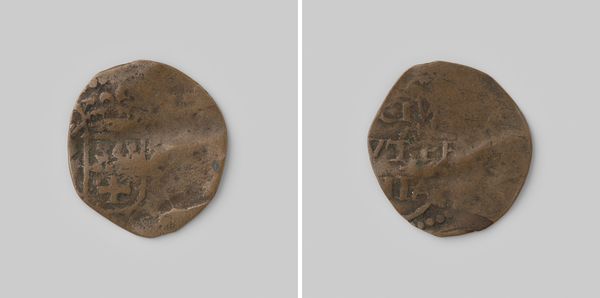
Drie groschen, noodmunt uit Gotha van Johan Frederik II hertog van Saksen, geslagen tijdens het beleg door de troepen van keurvorst August van Saksen 1567
0:00
0:00
metal, relief, sculpture
#
medieval
#
metal
#
sculpture
#
relief
#
sculpture
#
history-painting
Dimensions: height 2.4 cm, width 2.2 cm, weight 3.21 gr
Copyright: Rijks Museum: Open Domain
Curator: Let’s turn our attention now to this curious object: a "Drie groschen, noodmunt uit Gotha," emergency coinage from Gotha, created in 1567 during a siege. It was made during the reign of Johan Frederik II, Duke of Saxony. Editor: Well, first impressions, it looks pretty rough and ready. Like it’s been through a war, literally! I can imagine the weight and the desperation of needing it. The asymmetry and rudimentary execution really highlight the circumstances of its creation. Curator: Exactly. "Noodmunt," or necessity money, speaks volumes about material constraints during times of crisis. Regular minting processes would have been disrupted. It reflects the social and economic disruption caused by conflict, and also, that someone still controlled some quantity of material in the midst of the chaos. Editor: I’m intrigued by the imagery. The coat of arms on one side. A proud statement of authority at a time when authority itself was under threat. And on the other, just the date, almost like a stark reminder of time running out. The duke probably hoped that imagery was bolstering morale, as any symbolic act of control often will. Curator: It is potent, isn't it? A visual reassurance when material resources dwindled. Each element - the metal itself, crudely shaped and stamped - conveys this intense intersection of material reality and political messaging. Also, notice the hole—likely made so the coin could be worn. Monetary symbolism was literally on display here. Editor: So it's functional and propagandistic. This wasn’t about elegant design; it was about maintaining some semblance of order and faith during a period of immense uncertainty. And also perhaps signaling to the opposition about resources within the besieged location. Curator: Precisely. This small piece of metal is far more than just currency; it embodies the very tensions, struggles, and improvisations of 16th century warfare. Editor: It makes you think about the basic conditions of life and government, all distilled into something you could hold in your hand. I see the raw edges, and I am thinking not only of the people who were able to acquire the coin, but also the mint workers who created the artifact in dire times. It feels quite poignant. Curator: A perfect summary, and it highlights that this object reflects value in more than one sense. Thank you.
Comments
No comments
Be the first to comment and join the conversation on the ultimate creative platform.
